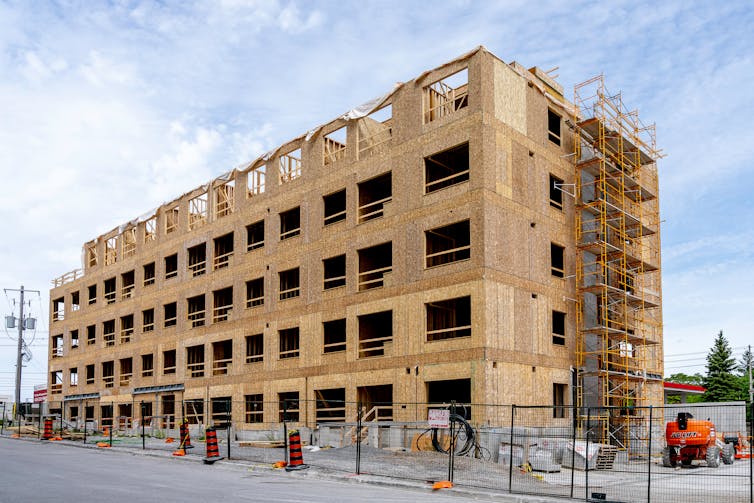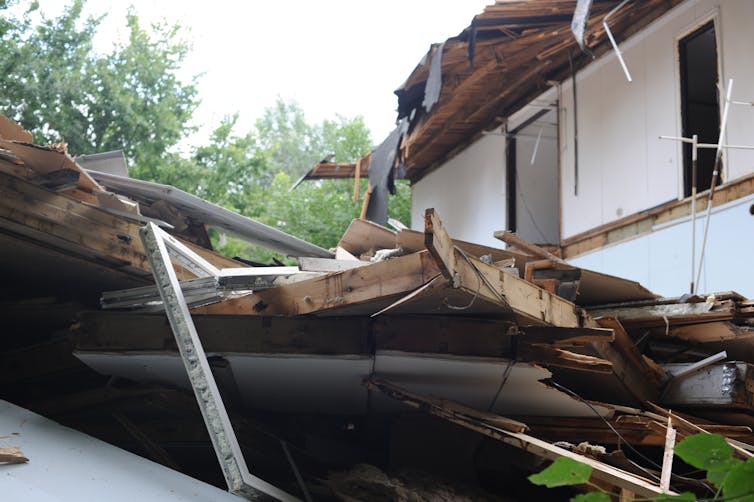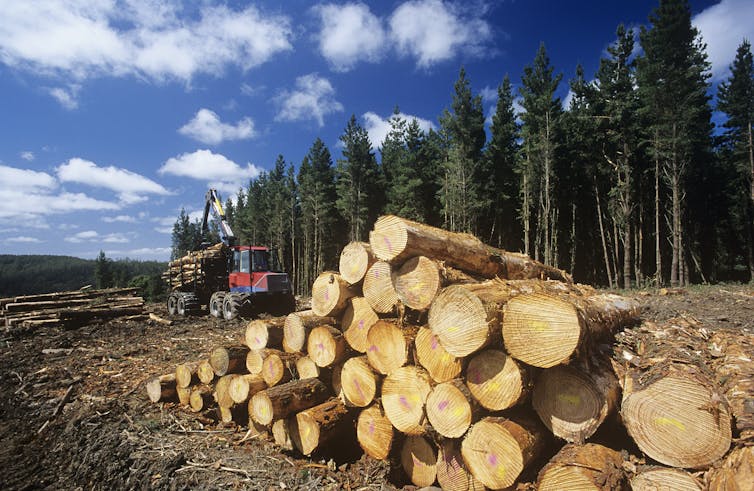Wooden housing boom needed to boost climate goals, says new study – but is it possible?
Housing 90% of people moving to cities in mid-rise buildings made from engineered wood could save the construction industry 106 billion tonnes of CO₂ by 2100, according to a new study. This, the researchers argued, would rein in the industry’s total emissions, which threaten to consume between 35% and 60% of the remaining carbon budget for halting global heating at 2°C with the continued use of cement and steel.
I did not contribute to this study, but I work in the same field as its authors. My research also involves accounting for the greenhouse gas emissions of buildings. Not just the operational emissions, such as those resulting from burning fossil gas for heating, but the embodied emissions too: the atmosphere-warming gases that were released when the bricks were fired or when the steel in its girders was produced.
I am always looking for elegant solutions to the many challenges climate change presents. And while I admire the ambition of these proposals, I am sceptical as to whether they are feasible.
Engineered wood (unlike timber, which is wood that has been cut into boards or beams) describes a number of composite construction materials made by gluing wood together to give it uniform and predictable qualities. One well-known engineered wood product is cross-laminated timber, or CLT, which is made from perpendicularly arranged wood panels.
The increased stability and strength with which this endows CLT makes it a suitable replacement for conventional materials such as concrete and brick, and it can bear the necessary load to make mid-rise buildings (typically between five and ten storeys tall) as the study suggests.

The manufacturing process for engineered wood requires more energy than cutting wood into timber, however, and so it generates more emissions. Some bonding adhesives may also be toxic. So would a woody construction boom really benefit the environment and keep enough carbon in buildings and out of the atmosphere?
Construction lifetimes
There are two things to consider when working out the emissions involved in using engineered wood. First, the CO₂ captured by the growing tree from which the wood originated. This sets a negative carbon balance: the material at this stage absorbs more carbon than it releases.
Second, the manufacturing process which produces engineered wood uses energy and so emits carbon. The balance between the two is still negative, meaning manufacturing emits less than is absorbed by the wood during growth. And so more carbon is stored overall at the start of the building’s lifetime.
What happens at the end of that lifetime will ultimately determine if a building predominantly constructed with engineered wood remains carbon negative. If the material from a deconstructed building is sent to landfill and left to rot without the gases being captured, or if it is incinerated, the carbon stored in the engineered timber will return to the atmosphere, and there will be no net carbon storage.
According to the Royal Institution of Chartered Surveyors, homes and other buildings like offices have a whole life carbon cycle of roughly 60 years. This is how long the building is expected to last and accounts for carbon stored and emitted during construction, use and deconstruction.
Only if engineered timber is completely recycled into new products will the assumptions about carbon storage in harvested wood products hold. But a building built from engineered wood will still contain numerous conventional materials, including metal fasteners, screws, nails, tiles and glass. These can contain a significant amount of embodied carbon that the article does not seem to account for.

Building to net zero
According to the study, plantations expanding by 3.6 million hectares each year would provide enough engineered wood to create housing for new urban residents until 2100. At the moment, the world’s plantations expand at roughly 2 million hectares annually, according to the study.
Significantly increasing the area of land dedicated to producing timber may not be possible in all countries, particularly where land is scarce and competition with food production is fierce. Any new plantations may not grow according to expectations due to droughts or wildfires.

Some countries might struggle to afford the investment in an engineered wood construction sector on their own. National planning regulations vary too, so that the large-scale expansion of cities using engineered wood may be difficult to approve and achieve. The plan described by the researchers would also require concerted action across lots of different countries.
The study inspires optimism for a future in which the world’s growing urban population will find shelter in new, climate-neutral housing. But it makes assumptions which will be difficult to realise. Perhaps its greatest contribution is illuminating the tremendous challenges which must be overcome to build a net zero world.
